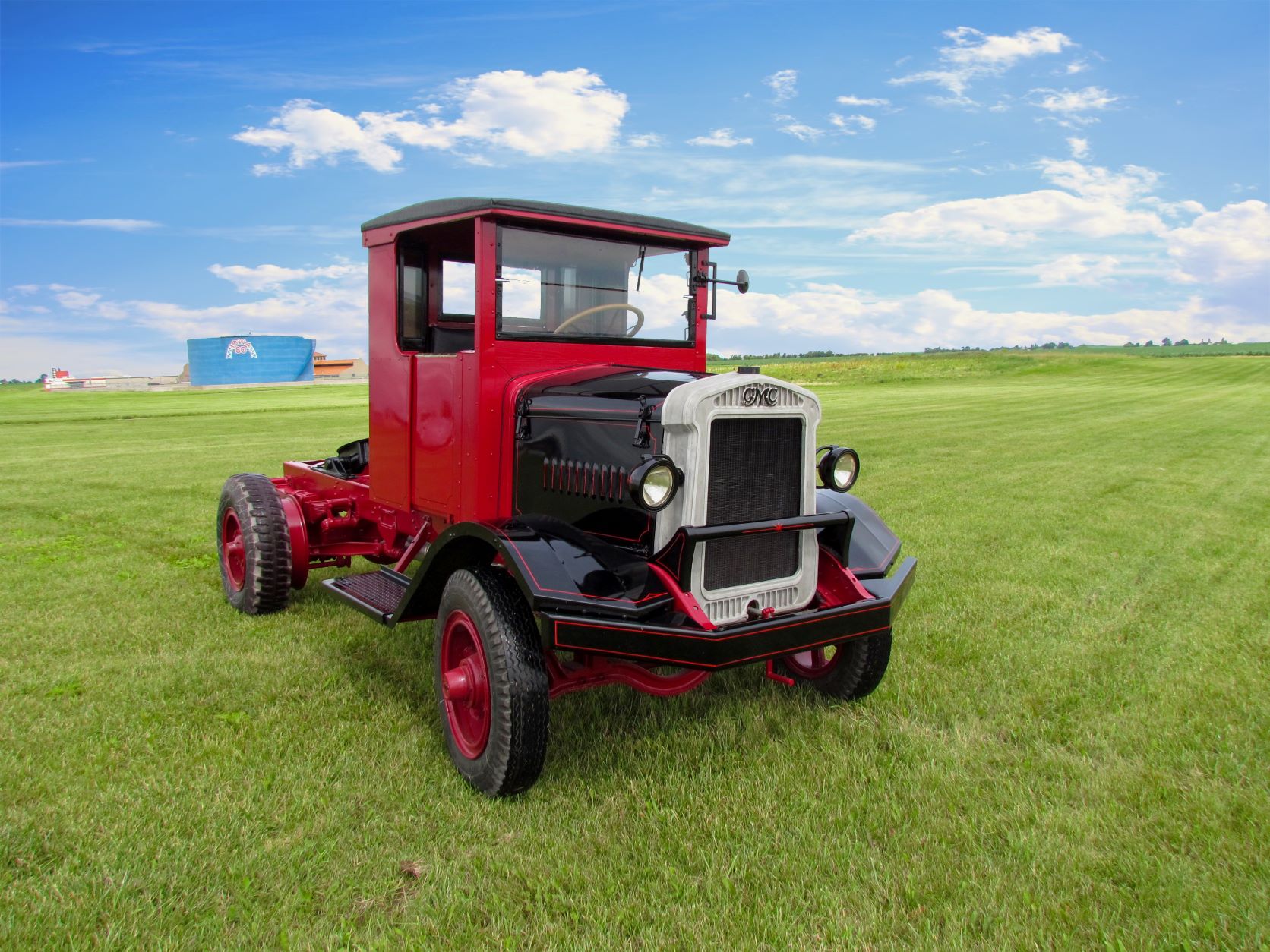
Trucks on Display
Below is a sampling of the many trucks on display in our Trucking Hall of Fame® Exhibit Hall. Check out our app for more information, photos, and an audio recording for each truck. Click here to download.

1927 GMC Big Brute 10-Ton
Engine Type:
GMC 53 Horsepower
Transmission Type:
GMC Two-Range
Truck Information:
This 1927 GMC Big Brute was a big truck in its day. It was built for strength and durability, not speed. The Big Brute boasted a two-range transmission, permitting a wider range of gear reductions for pulling power. The truck was also known for its sharp 17-foot turning radius, touting it could do a U-turn in a city street, even with the trailer attached! A unique feature of the cab is the sliding glass which folds up into three sections behind the driver and the passenger. The door also slides back into the cab, like a pocket door in older homes. This truck was originally used at a grain elevator in Minnesota. It was used so much that the hard rubber tires were worn off. The wheel spokes were then cut and rims were welded to the spokes to accommodate pneumatic tires. You'll notice this truck has a roof, a windshield, and side windows. Wagons pulled by horses didn't have any of that in the 1920s. If you were making deliveries with this truck, you had protection from the cold and rain, which was unusual at the time. Despite not having heat, air conditioning, automatic wipers, or an electric starter, it was still considered fancy in its day. It could haul 10 tons; that was a big load. See the bar across the grill? The rumor behind its existence is that people who still used horses for transportation didn't like trucks because they were faster, and they scared the horses. So, they would back their horse wagons into the front of the truck and damage them. As a result, truck drivers put these bars at about wagon height to protect their radiators. Top Speed: 15 MPH
GMC 53 Horsepower
Transmission Type:
GMC Two-Range
Truck Information:
This 1927 GMC Big Brute was a big truck in its day. It was built for strength and durability, not speed. The Big Brute boasted a two-range transmission, permitting a wider range of gear reductions for pulling power. The truck was also known for its sharp 17-foot turning radius, touting it could do a U-turn in a city street, even with the trailer attached! A unique feature of the cab is the sliding glass which folds up into three sections behind the driver and the passenger. The door also slides back into the cab, like a pocket door in older homes. This truck was originally used at a grain elevator in Minnesota. It was used so much that the hard rubber tires were worn off. The wheel spokes were then cut and rims were welded to the spokes to accommodate pneumatic tires. You'll notice this truck has a roof, a windshield, and side windows. Wagons pulled by horses didn't have any of that in the 1920s. If you were making deliveries with this truck, you had protection from the cold and rain, which was unusual at the time. Despite not having heat, air conditioning, automatic wipers, or an electric starter, it was still considered fancy in its day. It could haul 10 tons; that was a big load. See the bar across the grill? The rumor behind its existence is that people who still used horses for transportation didn't like trucks because they were faster, and they scared the horses. So, they would back their horse wagons into the front of the truck and damage them. As a result, truck drivers put these bars at about wagon height to protect their radiators. Top Speed: 15 MPH
< Return To Truck List

